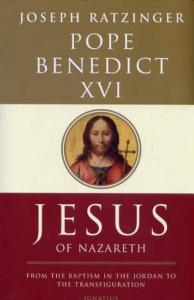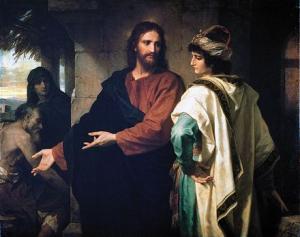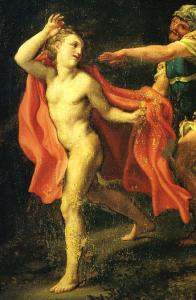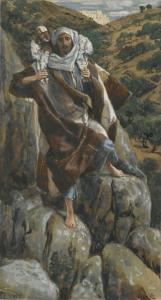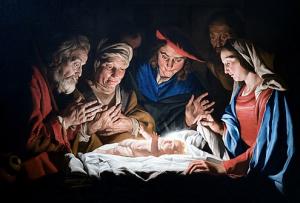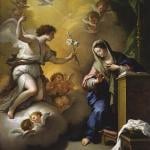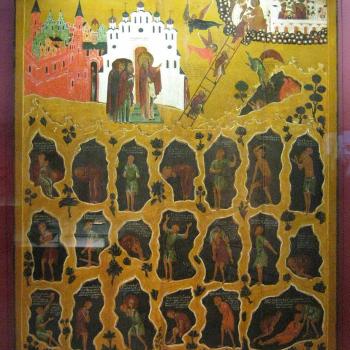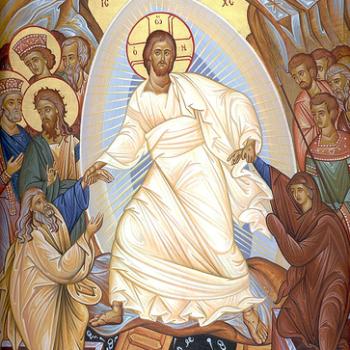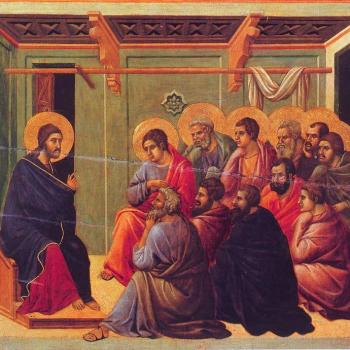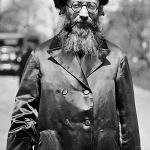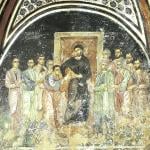Matthew, Mark Luke and John give us in their writings the life of Jesus Christ, the founder of the Catholic Church and the main protagonist of the Bible. Through the centuries many individuals have recounted the live of Christ with their own individual outlook on the man and his mission. Each book is a commentary on the gospels in a fresh creative way that helps us see the gospels more clearly.
Pope Benedict XVI, in his book. Jesus of Nazareth: From the Baptism in the Jordan to the Transfiguration (2007) writes in the introduction some of his favorite takes on the mysterious lives of Christ…
When I was growing up—in the 1930s and 1940s—there was a series of inspiring books about Jesus: some of the authors one could name are…
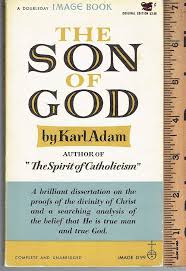
For the mystery of Christ does not lie in the fact that he is God, but that he is God-man.
The great wonder, the incredible thing, is not only that the majesty of God shone in Christ’s countenance, but that God became true man, that he, the God, appeared in human form. The Christian gospel announces primarily not an ascent of humanity to the heights of the divine in a transfigura¬ tion, an apotheosis, a deification of human nature, but a descent of the Godhead, of the divine Word, to the state of bondage of the purely human.
This is the kernel of the primitive Christian message.
“ The Word was made flesh and dwelt among us ” ;
he “ emptied himself, taking the form of a servant, being made in the likeness of man, and in habit found as a man ” (Phil. ii. 7).
Hence it is just as important to establish that Christ is full and complete man, that for all the hypostatic union with the Godhead, he possessed not only a human body but also a purely human soul, a purely human will, a purely human consciousness, a purely human emotional life, that in the full and true sense he became as one of us, as it is to establish the other proposition, namely, that this man is God. Indeed, the doctrine of the divinity of Christ first acquires from the other doctrine — Christ is full and perfect man — its specifically Christian imprint and its specifically Christian form ; its essential difference from all pagan apotheoses and saviour gods.
– The Son of God (1934)
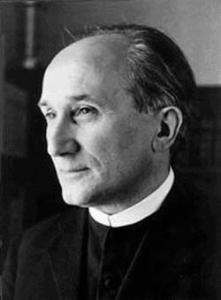
Through the Holy Spirit the Redeemer came to us, straight from the heart of the Heavenly Father.
Son of God become man—not only descended to inhabit a human frame, but ‘become’ man—literally; and in order that no possible doubt arise, (that, for example, it might never be asserted that Christ, despising the lowliness of the body, had united himself only with the essence of a holy soul or with an exalted spirit,) John specifies sharply: Christ “was made flesh.” Only in the flesh, not in the bare spirit, can destiny and history come into being; this is a fact to which we shall often return.
God descended to us in the person of the Savior, Redeemer, in order to have a destiny, to become history. Through the Incarnation, the founder of the new history stepped into our midst. With his coming, all that had been before fell into its historical place “before the birth of Our Lord Jesus Christ,” anticipating or preparing for that hour; all that was to be, faced the fundamental choice between acceptance and rejection of the Incarnation. He “dwelt among us,” “pitched his tent among us,” as one translation words it. “Tent” of the Logos—what is this but Christ’s body: God’s holy pavilion among men, the original tabernacle of the Lord in our Midst, the “temple” Jesus meant when he said to the Pharisees: “Destroy this temple, and in three days I will raise it up” (John 2:19).
Somewhere between that eternal beginning and the temporal life in the flesh lies the mystery of the Incarnation. St. John presents it austerely, swinging its full metaphysical weight. Nothing here of the wealth of lovely characterization and intimate detail that makes St. Luke’s account bloom so richly. Everything is concentrated on the ultimate, all-powerful essentials: Logos, flesh, step into the world; the eternal origin, the tangible earthly reality, the mystery of unity.
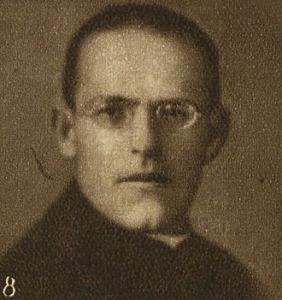
Now comes the great mystery:
“As Moses lifted up the serpent in the desert, so must the Son of man be lifted up; that whosoever believeth in him may not perish, but may have life everlasting.”
The Son of God Himself comes down to earth to redeem men; He will perform the work of redemption in a manner like that in which the Israelites in the desert were healed of the serpent’s bite. If they looked up to it, full of faith and confidence in God, they were saved from death. Thus all men will be saved if, believing and confident, they look up to the Son of God, for He, too, will be “lifted up.”
Jesus was referring to His crucifixion in a mysterious manner. The reference was more readily intelligible for people of those times than for us. Crucifixion was frequently carried out in such a way that the upright beam was first placed in position, then the condemned person was nailed to the cross-beam, and, with it, was raised aloft, or lifted up, against the upright beam. In these instances crucifixion was an actual elevation. A tangible illustration of the association of these ideas is found in a remark contained in an ancient Egyptian dream-book: If one dreams that he rises upward “dancing,” that is turning about, this means he will die on the cross.
Nicodemus can no longer follow the trend of Jesus’ discourse, although the Savior had made reference to an event known to all Jews, that of the brazen serpent. Since he can no longer offer any objections, he loses interest in further questioning. But Jesus continues to instruct him.
Since the new life depends upon the good or ill will of the individual, and not upon knowledge in the worldly sense, the conditions for salvation are the same for all men, “For God so loved the world as to give his only begotten Son: that whosoever believeth in him shall not perish, but may have life everlasting. For God sent not his Son into the world to judge the world: but that the world may be saved by him.”
Men do not save themselves; God saves them. Therefore salvation does not depend upon knowledge as the world views it; on the contrary, such knowledge may become a hindrance to salvation by God. For salvation by God has as its sole, but indispensable condition that man accept it willingly from the hand of God. As soon, therefore, as God offers salvation to an individual, the decision is made automatically, as we would say. “He that believeth in him, is not judged. But he that doth not believe is already judged: because he believeth not in the name of the only begotten Son of God.”
-The Life of Jesus Christ In The Land Of Israel And Among Its People (1944)

There was once a man who lived during a precisely defined period in the reigns of Augustus and Tiberius Caesar.
His existence is an incontestable fact. He was known as a manual worker, a carpenter using the hammer and the plane, with shavings curling round his ears He could be seen walking along a road which is still pointed out to us; in the evening he would be stretched out upon a bed of rushes or a string ham¬ mock, tired out and sleeping like any other man, just like one of us.
Yet he said the most surprising things that have ever been heard. He said that he was the Messiah, the heaven-sent witness through whom the chosen people were to fulfill their glorious destiny. More astounding still, he said he was the Son of God. And he was believed. He found men to accompany him along the roads of Palestine, as he traveled across the country. He performed miracles with disconcerting ease. There were many who believed that he would bring about the political independence of Israel.
But then, any mystic can collect devoted fanatics. The culmination of this scandal was that the man was suddenly wiped out, without putting up the slightest resistance. So far from being discouraged by this failure, several of his disciples went out into the world to bear witness to his divinity, even with their blood, and ever since mankind, seeing in this defeat the sign of victory, has prostrated itself before a common gibbet, just as if tomorrow a church should raise the scaffold for the veneration of the crowd.
The mystery of Jesus is neither more nor less than the mystery of the Incarnation.
Jesus is at once of history and beyond it.
The most astonishing fact of all is that this life which culminated in agony did not end: it reappeared in a stupefying new perspective. This dead man came to life, he spoke and moved, he showed himself to those who had known him alive, and in defiance of logic, his disciples were to say that this was for them the supreme and incontestable testimony. “And if Christ be not risen, then is our preaching vain, and your faith is also vain.” (I Cor. xv. 14) History must either reject Christianity or accept the Resurrection.
The life of Christ is set definitely in historical time, not in some remote legendary period as are the traditions concerning Orpheus, Osiris or Mithra. The Roman empire of the first century is known to us in remarkable detail. Great men like Livy or Seneca, whose work has come down to us, were writing when Jesus was alive. Virgil, had he not died at the early age of fifty-one, might have been living in his childhood; Plutarch and Tacitus were of the generation that followed him. Further more, very many of the personages who appear in the narratives concerning Jesus appear also in other historical documents— for example, those whom St. Luke mentions in the third chapter of his Gospel, Tiberius Caesar, Pontius Pilate, Herod, the priests Annas and Caiaphas, and John the Baptist, whose life and apostolate is recounted by Josephus.
Jesus and His times (1954)
and Giovanni Papini,
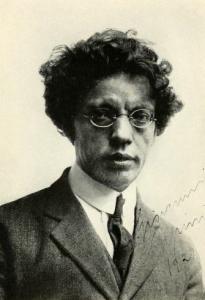
Few of us dare to ask ourselves, “Who am I?”
and there are still fewer who can answer. The question “Who are thou?” is the most tremendous, the most weighty which man can put to man. Other human beings are for each of us a sealed mystery even in the moments of supreme passion, when two souls desperately essay to become one. We are all of us a mystery even to ourselves.
“But whom say ye that I am?”
And then there came to Simon Peter the great light that was almost too great for him, and made him First to all eternity. He could not keep back the words, they came to his lips almost involuntarily in a cry of which he himself the moment before would have believed himself incapable: “Thou art the Christ, the Son of the living God. Thou hast the word of eternal life, and we believe and are sure that thou art that Christ, the Son of the living God.”
At last from Peter the Rock there sprang forth the well-spring which from that day to this has quenched the thirst of sixty generations of men. It was his right and his reward. Peter had been the first to follow Christ in the divine wanderings: it was for him to be the first to recognize in the wanderer the Proclaimer of the Kingdom, the everlasting and lawful sovereign of that Kingdom, the Messiah whom all men had been awaiting in the desert of the centuries, who had finally come and was there Himself, clothed in flesh, standing before their eyes, with His feet in the dust of the road.
The pure King,
the Son of Justice,
the Prince of Peace,
the Son of Man sent by God,
the Saviour,
the Anointed,
whom the prophets had foretold in the twilight of sorrow and affliction; who had been seen by apocalyptic writers
descending upon the earth like lightning, in the fullness of victory and glory;
for whom the poor,
the wounded,
the hungry,
the afflicted,
had been waiting from century to century,
as dry grass waits for rain,
as the flower waits for the sun,
as the mouth awaits the kiss,
and the heart, consolation;
the Son of God and of Man,
the Man who hid God in human flesh,
the God who cloaked His divinity in Adam’s clay,
it is He,
the dear Brother of every day,
who looks quietly into the astounded eyes of those chosen ones!
The period of waiting is done;
ended is the vigil!Why had they not recognized Him until that day?
Whence did it come in those simple souls,
the first notion of the true name of Him who so many times had taken them by the hand,
and had spoken for their ears to hear?
They could never think that one of them—a common man like them,
a workman and poor as they were—could be the Saviour Messiah announced and awaited by saints and by the centuries.
With the intellect alone they could never have discovered Him, nor with the mere bodily senses, nor with the teachings of the scriptures; only with the inspiration, the intuition, the sudden flaming illumination of the heart, as it happened that day in the soul of Peter.“Blessed art thou, Simon Bar-Jona; for flesh and blood hath not revealed it unto thee, but my Father which is in Heaven.”
Fleshly eyes would not have been able to see what they saw without a revelation from on high.
LIFE OF CHRIST (1923) by Giovanni Papini
All of these books based their portrayal of Jesus Christ on the Gospels. They presented him as a man living on earth who, fully human though he was, at the same time brought God to men, the God with whom as Son he was one. Through the man Jesus, then, God was made visible, and hence our eyes were able to behold the perfect man.
Pope Benedict has some interesting insights on Jesus as well.
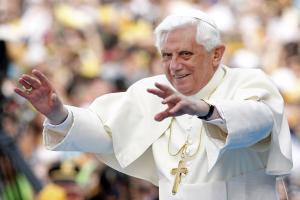
[A] remarkable story that the Book of Exodus recounts [concerns] Moses’ relationship with God. There we are told that Moses asked God, “I pray thee, show me thy glory” (Ex 33:18). God refuses his request: “You cannot see my face” (Ex 33:20). Moses is placed near God in the cleft of a rock, and God passes by with his glory. As he passes, God covers Moses with his own hand, but he withdraws it at the end: “You shall see my back; but my face shall not be seen” (Ex 33:23).This mysterious text played an important role in the history of Jewish and Christian mysticism; it served as the basis for attempts to discern how far contact with God can extend in this life and where the boundaries of mystical vision lie. In terms of the present question, the main point is that although Moses’ immediate relation to God makes him the great mediator of Revelation, the mediator of the Covenant, it has its limits. He does not behold God’s face, even though he is permitted to enter into the cloud of God’s presence and to speak with God as a friend. The promise of a “prophet like me” thus implicitly contains an even greater expectation: that the last prophet, the new Moses, will be granted what was refused to the first one—a real, immediate vision of the face of God, and thus the ability to speak entirely from seeing, not just from looking at God’s back. This naturally entails the further expectation that the new Moses will be the mediator of a greater covenant than the one that Moses was able to bring down from Sinai (cf. Heb 9:11–24).
This is the context in which we need to read the conclusion of the prologue to John’s Gospel: “No one has ever seen God; it is the only Son, who is nearest to the Father’s heart, who has made him known” (Jn 1:18). It is in Jesus that the promise of the new prophet is fulfilled. What was true of Moses only in fragmentary form has now been fully realized in the person of Jesus: He lives before the face of God, not just as a friend, but as a Son; he lives in the most intimate unity with the Father.
We have to start here if we are truly to understand the figure of Jesus as it is presented to us in the New Testament; all that we are told about his words, deeds, sufferings, and glory is anchored here. This is the central point, and if we leave it out of account, we fail to grasp what the figure of Jesus is really all about, so that it becomes self-contradictory and, in the end, unintelligible. e
Pope Benedict XVI, . Jesus of Nazareth: From the Baptism in the Jordan to the Transfiguration (2007)
A few other great examples of the Life of Christ he didn’t mention includes these individuals.
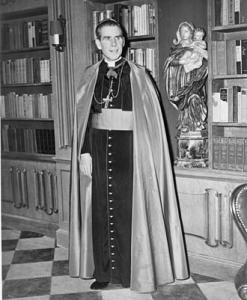
Only two classes of people found the Babe:
the shepherds and the Wise Men; the simple and the learned; those who knew that they knew nothing, and those who knew that they did not know everything. He is never seen by the man of one book; never by the man who thinks he knows. Not even God can tell the proud anything! Only the humble can find God!
As Caryll Houselander put it, “Bethlehem is the inscape of Calvary, just as the snowflake is the inscape of the universe.” This same idea was expressed by the poet who said that if he knew the flower in a crannied wall in all its details, he would know “what God and man is.” Scientists tell us that the atom comprehends within itself the mystery of the solar system.
It was not so much that His birth cast a shadow on His life, and thus led to His death; it was rather that the Cross was there from the beginning, and it cast its shadow backward to His birth. Ordinary mortals go from the known to the unknown submitting themselves to forces beyond their control; hence we can speak of their “tragedies.” But He went from the known to the known, from the reason for His coming, namely, to be “Jesus” or “Savior,” to the fulfillment of His coming, namely, the death on the Cross. Hence, there was no tragedy in His life; for, tragedy implies the unforeseeable, the uncontrollable, and the fatalistic. Modern life is tragic when there is spiritual darkness and unredeemable guilt. But for the Christ Child there were no uncontrollable forces; no submission to fatalistic chains from which there could be no escape; but there was an “inscape”—the microcosmic manger summarizing, like an atom, the macrocosmic Cross on Golgotha.
Life of Christ (1958) (pp. 19-20)
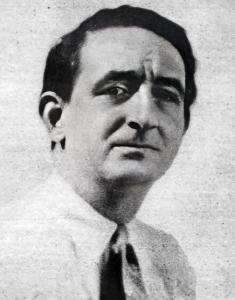
This is the story of Jesus.
It is a chronology of events from the betrothal of Mary and Joseph to the days after the Resurrection, and the episodes are taken from the four Gospels. What is imaginative in the narrative is largely detail to fill in chinks left open in the Bible accounts; nothing has been included that did not seem a reasonable assumption from the records.
God, who had fashioned time and space in a clockwork of billions of suns and stars and moons, in the form of His beloved Son became a human being like ourselves. On this microscopic midge of planet He remained for thirty-three years. He became a real man, and the only perfect one. While continuing to be the true God, He was born in a stable and lived as a w orkingman and died on a cross. He came to show us how to live, not for a few years but eternally. He explained truths that would make our souls joyous and free. This is the story of Jesus-the greatest story ever told.
Within this novelization lies the mysterious life of Christ.
To Joseph she sent a dutiful and tender note, telling him that the time was soon coming when she would explain to him why she had to leave so suddenly. No mention of the day they had set for their wedding; indeed she did not dare to speak of their marriage at all. For Mary was perfectly well aware that any man might refuse to believe her and cast her out. This was her only source of unhappiness in those first three months. She was busy, she worked hard, and she retained within herself that supernal sense of universal belonging, of general participation with earth and stars in the mystery of life.
Amazing words, themselves harder to understand than any parable. That behind all these words and deeds of the Master was a universal purpose, beyond the grasp of men, was not yet clear to the disciples, nor is it clear to their descendants today. He had His work to do and it was the work of mercy and salvation. That work must go on, must not be interrupted before all was accomplished. In these enigmatic, seemingly hard words lay a mystery never to be fully revealed to His disciples.
Feeling himself in the presence of a mystery, Annas promptly declined to take any stock of it and fastened his gaze approvingly on the bound wrists of Jesus, but even so he was already aware of an uneasy suspicion that you cannot tie up infinity with a string.
The Greatest Story Ever Told (1949)
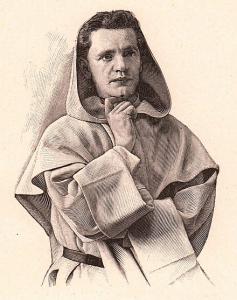
St. Paul exhorts us to “put on Jesus Christ,” and his words, understood in the spiritual sense in which he intended them, are of immeasurable importance. However, there is perhaps another sense in which it is not
impossible, nor without importance, to put on Jesus Christ.
We may put on Jesus Christ in imagination, placing ourselves not at the foot of the Cross, nor before it, but upon it, with head bowed beneath the inscription, wearing the crown of thorns, pierced by the nails, feeling the
cold, rough wood between our shoulders. In short, we can make our own the sphere of vision and the emotions that were His, seeing with His eyes and feeling with His heart, remembering, judging, and foreseeing with Him
so that, still in this same sense of imagining that we have changed places with Him, it is no longer we who live but Christ who lives in us.
Life bears testimony to life, being to being. That which is self-contained and consistent bears the mark of God. Now the Spirit of Christ is a full life,a harmony without a false note, a logic that never falters; and its simplicity
reveals creative art. See the divine simplicity of the Gospel and of the catechism, the simplicity of the soul of Christ and of the souls of the saints! This ineffable simplicity contains superhuman wisdom, and the pure and limpid style in which that wisdom loves to flow, like clear water in crystal, reveals all its wondrous depths.
Those who understand this find in it an irresistible attraction. Mystery cramps the spirit; but the convergence and the coherence of mysteries are a
beam of light that illuminates the whole. We feel that here is truth, because here is unity, with which truth is one. From this arises certitude, which makes mystery a bliss.
What Jesus saw from the cross (1930/1948/)
Recently the Life of Christ has left the printed page and come to the movies with new cinematic versions of the Gospel stories.


